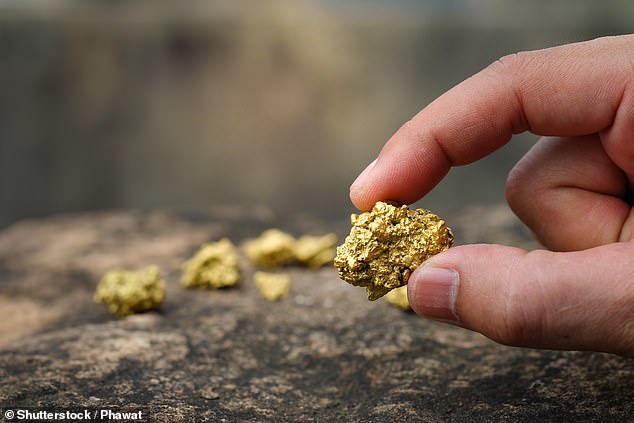I started this article a few days ago bemoaning the ‘risk-off’ attitude that has seen around 15 per cent wiped from the AIM All Share (and more from individual constituents of the junior index).
Since then, we’ve been reintroduced to the sort of market volatility last seen at the start of the pandemic as Russia chanced its arm in Ukraine.
Unwelcome as it has been, the conflict has focused minds and attitudes. This has resulted in an uptick in demand for precious metals, haven investments in times of tumult.

Nevada-focused Great Western mines gold, silver, as well as copper
It’s also led to renewed interest in the shares of those companies either mining, or out searching for gold and silver.
So, it’s apt that this week we are taking a look at one of the sector’s smaller players, Nevada-focused Great Western Mining, a micro-cap explorer.
A little life has returned to the share price in the last couple of trading days (for the reasons outlined above). Before that the trajectory had been in the opposite direction.
Yet, the news flow from GWM has been largely positive, the plans for 2022 well sketched and, importantly, fully funded.
Its team is currently focused on an exploration programme that builds on the solid drill results of 2021. It is also plotting a route to early production, which, if the stars align, could occur ‘fairly shortly’, according to chairman Brian Hall.
Dealing with the exploration first, 23 follow-up holes are planned for a total of just shy of 4,000 metres. Last year’s work at Trafalgar Hill hints at its potential with grades of up to 8.9 grammes per tonne.
The aim when the drill rigs start turning from spring onwards is to test the mineralised structure to the south along-strike at Trafalgar Hill, and to the east, which is down-dip of the existing intercepts.
As part of the 2022 campaign, the Olympic Gold Project will be assessed for its potential with a series of 13 holes into the OMCO vein for a total of 2,220 metres
GWM’s geologists will also take a look at the Southern Alteration Zone of the Rock House area with five holes.
All the drilling is the ‘follow-up/appraisal’ variety, says Hall. ‘It’s following veins we’ve established; it is following trends we’ve established,’ he explains.
‘If it’s successful, if it goes well, we could be in a position where we’ve actually got ourselves some kind of gold and silver resource this year, maybe at Trafalgar Hill, which is one of the Olympic gold projects. That would be the aim.’
Across all its assets the company is targeting a resource of 500,000 to 1.5million of gold equivalent ounces.
As those familiar with GWM already know, the story doesn’t start and end with precious metal exploration.
It has some significant copper assets, including M2 in the Black Mountain claims group, where it has established an inferred resource of 4.28million tonnes at 0.45 per cent copper.
But, because of the nature of this style of deposit, which will require significant further investment, GWM is looking for a partner that would fund additional work.
Followers of the group will also know there is route to early gold and silver production.
The addition of the Olympic Gold Project, which is around 50 miles from the company’s main cluster of claims, brought with it some large tailings heaps. This waste material has the potential to be re-processed alongside historic spoil heaps at the aptly named Mineral Jackpot deposit.
There are two impediments to the immediate to the start to the commercial processing of this material.
Access to Mineral Jackpot is the first with road widening work needed to allow a 20-tonne truck in and out of the area. The second is the approvals required to construct a facility to turn the ore into a concentrate.
Work on the road could be completed by early summer, Hall says, while regulatory hurdles will take longer to finalise.

The GWM chairman says the company will likely finance the stockpile and tailings processing facility via royalty agreement or debt facilities that are non-dilutive to existing investors.
‘We are aiming not to go back to shareholders with this,’ he adds.
‘But we haven’t yet optimised how we are going to do this,’ he says of the basic production set-up that might be used.
‘We will have consultants on site in early spring and during the summer we expect to be able to decide how we’re going to do our processing.’
GWM has proven it is possible to extract precious metals from its spoil heaps at Mineral Jackpot after producing a small dore bar in December 2020.
Assay samples from 51 of those heaps speaks to their potential. The average grade of vein material came in at 1.57 grammes per tonne of gold 327 grams of silver.
Less minerally impressive was the altered wall rock in those heaps, which averaged 0.04 grams of gold and 14.8 grams of silver.
The spoil heaps were composed of an average 5 per cent vein material and 50 per cent altered wall rock.
Hall calls the results ‘highly encouraging’, adding that they are indicative of a broad distribution of mineralised material throughout the spoil heaps.
So, what to make of GWM? In all, it is sitting on 14,900 acres-worth of concessions within the Walker Lane trend, which has yielded significant discoveries such as Comstock Lode, Yerington, Pumpkin Hollow and Isabella Pearl.
Yet it has a market capitalisation of just £4.4million, or an enterprise value of £2.7million less the £1.7million in cash it had at its last update.
That money will be put to work hopefully adding value via the drill-bit in Nevada from spring onwards.
Assuming the process is successful, then one hopes the market will finally give GWM the credit it deserves for all the progress it has made and the treasure trove of assets it owns.
Some links in this article may be affiliate links. If you click on them we may earn a small commission. That helps us fund This Is Money, and keep it free to use. We do not write articles to promote products. We do not allow any commercial relationship to affect our editorial independence.




